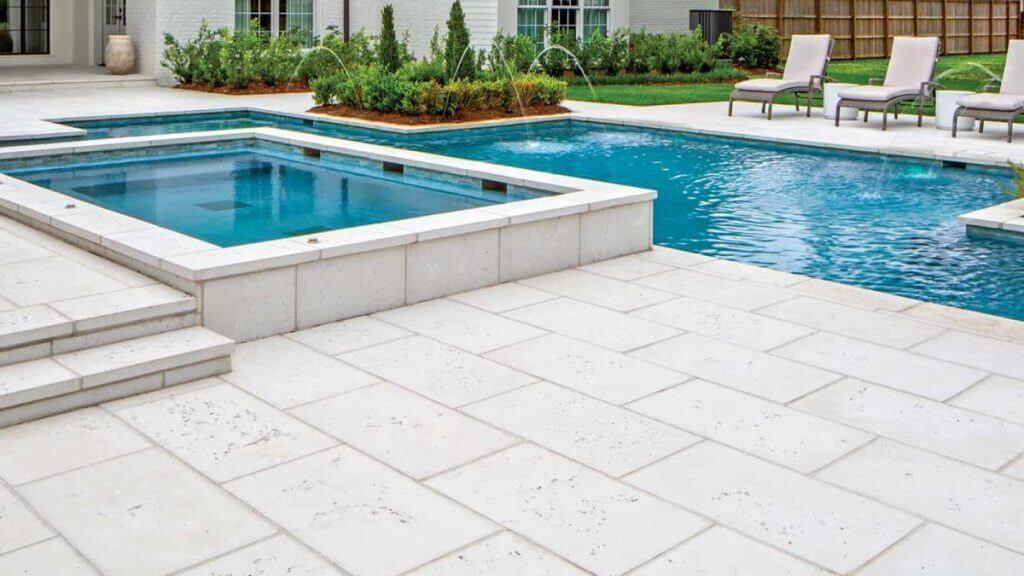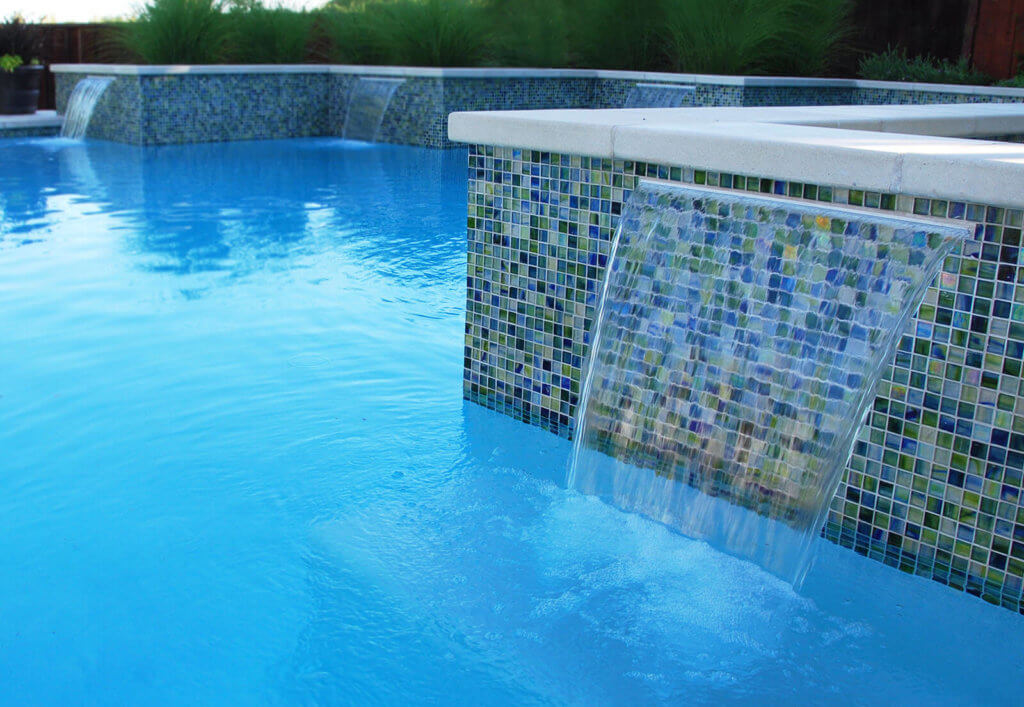Installing or resurfacing a pool is an exciting time that can also come with many challenging decisions. In working towards creating the backyard oasis of your dreams, you can be faced with choices you did not even realize you would need to make, such as pool materials and finishes. However, these materials, particularly your choice in epoxy pool paint, significantly contribute to the look and feel of your pool, as well as the future maintenance that your pool will naturally require. Picking the correct base material and the right pool epoxy for your swimming pool may sound like a daunting decision, but read on to learn about each type of material to make the best choice for your personal paradise that will last for years of fun in the sun.
Types of Pool Materials
Swimming pool epoxy finish is both a beautiful and smart way to seal a great-looking pool. It provides protection to the material underneath, gives you plenty of paint color options, and even protects your swimmers. You know that epoxy pool coating can help protect your pool, but what should go underneath it? You have more choices than ever when it comes to the material of your pool. From tile to fiberglass to concrete, you can apply a smooth finish with pool epoxy over any of these, though each surface certainly has its pros and cons. Be it price point, flexibility in shape and size, or durability, consider the following about how each surface might work with Aquaguard paints to create your lasting custom pool.
About Fiberglass Pools
Fiberglass pools are one of the most popular pool types for homeowners. As the name implies, they are made of fiberglass, which is a strong material made up of tiny glass threads. This material allows for the pool to be extremely smooth in nature and installed quickly. Prior to installation, a shell is created in a factory and then brought to the installation site and placed into a hole. There are a few pros and cons to consider about fiberglass pools:
Pros
● Low lifetime cost. Fiberglass pools have the smallest maintenance cost of all pool types over the lifetime of the pool, which is great for pool owners who want to enjoy their pool for a long time.
● Quick to install. Due to the fact they are manufactured, they can be installed from ground-breaking to water-in in less than two weeks.
● Less prone to algae. Fiberglass pools, especially when paired with fiberglass pool resurfacing, are less prone to algae growth than other pool types, lending itself to less cleaning and more swimming.
Cons
● Cost upfront. Fiberglass pools are one of the most expensive installation options and can scare away potential pool owners with the initial cost.
● Fewer customization options. Since they are created as a pre-made shell, customization options are limited, unless of course, you have a flexible budget.
About Concrete Pools
Concrete pools are created by spraying a dry mix, called guinte, with water. Alternatively, a shotcrete mix can also be sprayed on an excavated site. When these materials sit, they create a hard, concrete pool shell that strengthens and bonds with time. The flexibility of the spray can often mean the ability to create very specialized and durable pools. That being said, like any type of pool, concrete pools also have their downsides:
Pros
● Highly customizable. Due to the fact they are sprayed in an excavation site, the shape can be nearly anything that is structurally sound.
● Durability. The base of concrete pools lasts a great deal of time, which excites many prospective buyers.
● Classic appearance. Concrete pools paired with an Aquaguard pool coating have a classic look that promises to stay in style and appeal to many tastes.
Cons
● Slow installation. Concrete pools take time to dig and set. You can be looking at a four to six-month installation period with a concrete pool.
● High maintenance and frequent refinishing. Concrete pools require frequent refinishing and maintenance compared to other types of pools. However, Aquaguard pool coating resurfacing lessens the time between finishes to save you time and money.
About Tiled Pools
Tiled pools are a classic and well-known way to create a beautiful pool. The shape of the pool is first created, then is covered with grout and small ceramic tiles, similar to a bathroom floor or a kitchen backsplash. The possibilities for design with tile and Aquaguard paints together are nearly endless. Tile can be a wonderful way to line your pool, but it can also have some drawbacks:
Pros
● Premium finish at an affordable cost. Tiled pools look amazing in any setting and have a lower upfront cost to the owner.
● Makes water appear bluer. Due to the tile color and pool paint color, the water can appear much bluer and cleaner to swimmers.
● Easy cleaning. The surface of tiled pools, especially with swimming pool epoxy, lends itself to easier cleaning and less time doing so than other finishes.
Cons
● Difficult chemical balances. Tile can be chemically challenging to manage, particularly around the pH of the pool. When done incorrectly, algae can grow on the tiles.
● Can cause painful glares. When angled improperly, tiles can create uncomfortable glares due to reflections.
Diving in The Right Pool Materials For You
Though there are many types of pool materials to choose from, the great news is that you don’t need to dive right into the deep end of pool materials alone! Aquaguard5000 is here to support you in taking the next step in resurfacing. Contact us or visit our website for more information, further consultation, or to get started resurfacing your pool today.









